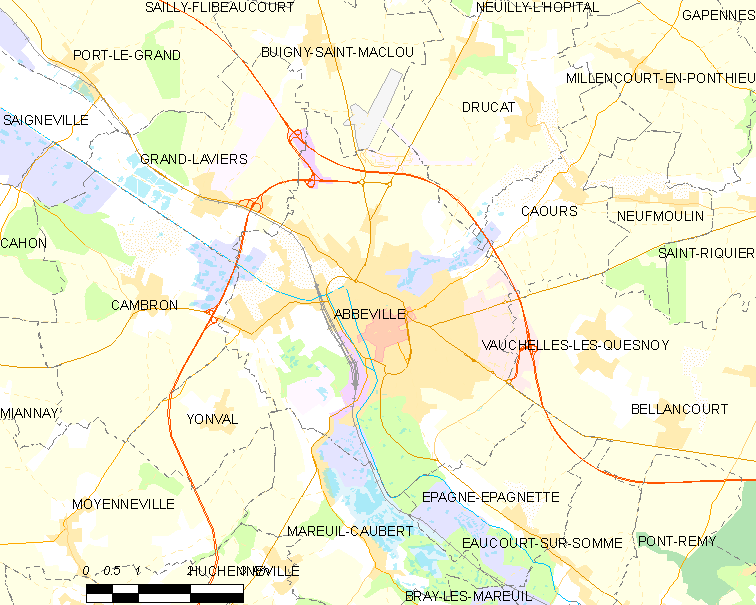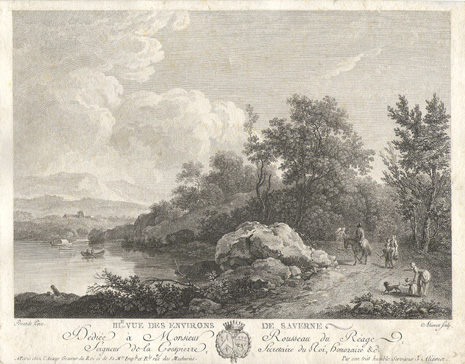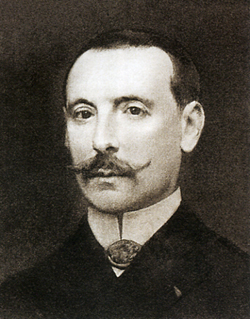|
Charles-François-Adrien Macret
Charles-François-Adrien Macret (2 May 1751, Abbeville - 24 December 1783, Paris) was a French designer and engraver. His works were signed, variously, as ''Macret'', ''Carolus Macret'', ''C. Macret'' and ''C.F. Macret''. Biography He was the second of seven children born to Jean-Baptiste Macret, a soapmaker, and his wife, Marie-Charlotte. His older sister, Marie-Anne-Françoise-Charlotte, married the painter, Pierre-Adrien Choquet (1743-1813). Henri Macqueron, ''Les Macret, graveurs abbevillois, catalogue raisonné de leur œuvre publié d'après les notes d'Émile Delignières, mises en ordre et complétées'', Imprimerie A. Lafosse, 191(Online) His youngest brother, , also became an engraver. His father died in 1772, when he fell into a soapmaking vat and was fatally scalded. He began his artistic education at the age of thirteen, when he was apprenticed to a metal engraver named Joseph Selik, originally from Hanover, who specialized in heraldry. It was from this first artisa ... [...More Info...] [...Related Items...] OR: [Wikipedia] [Google] [Baidu] |
Abbeville
Abbeville (; ; ) is a commune in the Somme department and in Hauts-de-France region in northern France. It is the of one of the arrondissements of Somme. Located on the river Somme, it was the capital of Ponthieu. Geography Location Abbeville is located on the river Somme, from its modern mouth in the English Channel. The majority of the town is located on the east bank of the Somme, as well as on an island. It is located at the head of the Abbeville Canal, and is northwest of Amiens and approximately from Paris. It is also as the crow flies from the and the English Channel. In the medieval period, it was the lowest crossing point on the Somme and it was nearby that Edward III's army crossed shortly before the Battle of Crécy in 1346. Just halfway between Rouen and Lille, it is the historical capital of the County of Ponthieu and maritime Picardy. Quarters, hamlets and localities *Émonville Park takes its name from one of its owners Arthur Foulc d'Émonvil ... [...More Info...] [...Related Items...] OR: [Wikipedia] [Google] [Baidu] |
Paris
Paris () is the Capital city, capital and List of communes in France with over 20,000 inhabitants, largest city of France. With an estimated population of 2,048,472 residents in January 2025 in an area of more than , Paris is the List of cities in the European Union by population within city limits, fourth-most populous city in the European Union and the List of cities proper by population density, 30th most densely populated city in the world in 2022. Since the 17th century, Paris has been one of the world's major centres of finance, diplomacy, commerce, culture, Fashion capital, fashion, and gastronomy. Because of its leading role in the French art, arts and Science and technology in France, sciences and its early adoption of extensive street lighting, Paris became known as the City of Light in the 19th century. The City of Paris is the centre of the Île-de-France region, or Paris Region, with an official estimated population of 12,271,794 inhabitants in January 2023, or ... [...More Info...] [...Related Items...] OR: [Wikipedia] [Google] [Baidu] |
Hanover
Hanover ( ; ; ) is the capital and largest city of the States of Germany, German state of Lower Saxony. Its population of 535,932 (2021) makes it the List of cities in Germany by population, 13th-largest city in Germany as well as the fourth-largest in northern Germany after Berlin, Hamburg and Bremen. Hanover's urban area comprises the towns of Garbsen, Langenhagen and Laatzen and has a population of about 791,000 (2018). The Hanover Region has approximately 1.16 million inhabitants (2019) and is the largest in the Hannover–Braunschweig–Göttingen–Wolfsburg Metropolitan Region, Hanover–Braunschweig–Göttingen–Wolfsburg Metropolitan Region, the List of EU metropolitan areas by GDP, 17th biggest metropolitan area by GDP in the European Union. Before it became the capital of Lower Saxony in 1946, Hanover was the capital of the Principality of Calenberg (1636–1692), the Electorate of Hanover (1692–1814), the Kingdom of Hanover (1814–1866), the Province of Hannove ... [...More Info...] [...Related Items...] OR: [Wikipedia] [Google] [Baidu] |
Heraldry
Heraldry is a discipline relating to the design, display and study of armorial bearings (known as armory), as well as related disciplines, such as vexillology, together with the study of ceremony, Imperial, royal and noble ranks, rank and genealogy, pedigree. Armory, the best-known branch of heraldry, concerns the design and transmission of the Achievement (heraldry), heraldic achievement. The achievement, or armorial bearings usually includes a coat of arms on a escutcheon (heraldry), shield, helmet (heraldry), helmet and Crest (heraldry), crest, together with any accompanying devices, such as supporters, Heraldic badge, badges, Heraldic flag, heraldic banners and mottoes. Although the use of various devices to signify individuals and groups goes back to Ancient history, antiquity, both the form and use of such devices varied widely, as the concept of regular, hereditary designs, constituting the distinguishing feature of heraldry, did not develop until the High Middle Ages. It i ... [...More Info...] [...Related Items...] OR: [Wikipedia] [Google] [Baidu] |
Nicolas-Gabriel Dupuis
Nicolas-Gabriel Dupuis (1698, Paris – 26 March 1771, Paris) was a French engraver. He sometimes signed his name as "Dupuis le Jeune" or "Dupuis Junior", to distinguish himself from his older brother, Charles Dupuis, who was also an engraver.''Nicolas-Gabriel Dupuis (1698-1771)'', Resources de la Bibliothèque nationale de France,Online/ref> Biography He and his brother both received their training from Gaspard Duchange, who offered him his daughter in marriage. He perfected his skills in England, where the Rococo style was in fashion and French artists were in great demand. In 1751, he was given the approval of the Académie royale de peinture et de sculpture and became a member three years later. He took numerous students; notably Louis Michel Halbou and Charles-François-Adrien Macret, as well as the Spaniards, Manuel Salvador Carmona and Pasqual Pere Moles. Among his notable illustrations are those created for the complete edition of the ''Fables'' of Jean de La Font ... [...More Info...] [...Related Items...] OR: [Wikipedia] [Google] [Baidu] |
Jacques-Philippe Le Bas
Jacques-Philippe Le Bas, or Lebas (8 July 1707, Paris – 14 April 1783, Paris) was a French engraver, head of the largest engraving workshop in Paris during the 18th century. Life and work His father was a wig-maker, and his family was very poor, so he was educated by his mother. When he showed some aptitude for drawing, she placed him in an apprenticeship with the architect and engraver, Roger Portalis, Henri Beraldi: ''Les Graveurs du dix-huitième siècle'', Vol.2, Damascène Morgand & Charles Fatout, 1881Online He also received professional advice from Nicolas-Henri Tardieu, and was inspired by the works of Gérard Audran.M. Huber et Rost, ''Manuel des curieux et des amateurs de l'art'', Vol.VIII : ''De la gravure en France'' II, pp.124-130 —Online Through Tardieu, he met the financier and art collector, Pierre Crozat, who was engaged in a project to have all the paintings in his collection engraved. Le Bas was commissioned to provide some of them. In 1733, he was hired b ... [...More Info...] [...Related Items...] OR: [Wikipedia] [Google] [Baidu] |
Jacques Aliamet
Jacques Aliamet (30 November 1726 in Abbeville – 29 May 1788 in Paris) was a French engraver. His brother François-Germain Aliamet was also an engraver. He perfected drypoint and his several surviving works include engravings after Nicolaes Berchem, Philips Wouwerman and Claude Joseph Vernet Claude-Joseph Vernet (; 14 August 17143 December 1789) was a French painter. His son, Carle Vernet, was also a painter. Life and work Vernet was born in Avignon. When only fourteen years of age he aided his father, Antoine Vernet (1689–1753 .... References External links Life and works of Jacques Aliamet 1726 births 1788 deaths 18th-century French engravers People from Abbeville Members of the Académie royale de peinture et de sculpture {{France-artist-stub ... [...More Info...] [...Related Items...] OR: [Wikipedia] [Google] [Baidu] |
Augustin De Saint-Aubin
Augustin de Saint-Aubin sometimes styled Auguste de Saint-Aubin (3 January 1736 – 9 November 1807), belongs to an important dynasty of French designers and engravers. Biography Augustin de Saint-Aubin was born on 3 January 1736 in Paris to the king's embroiderer Gabriel Germain de Saint-Aubin (1696–1756). He came from a family of artists and designers, which included his six siblings: brothers Charles-Germain de Saint-Aubin and Gabriel-Jacques de Saint-Aubin, as well as Catherine Louise, Louis-Michel, Athanasius, and Agathe, who were collectively known as the "Book of Saint-Aubin". His niece, Marie-François, daughter of Charles, was an artist as well. in the ''Dictionary of Pastellists Before 1800''. Trained by his brother, he later studied with |
Goncourt Brothers
The Goncourt brothers (, , ) were Edmond de Goncourt (1822–1896) and Jules de Goncourt (1830–1870), both French naturalism writers who, as collaborative sibling authors, were inseparable in life. Background Edmond and Jules were born to minor aristocrats Marc-Pierre Huot de Goncourt and his second wife Annette-Cécile de Goncourt (née Guérin). Marc-Pierre was a retired cavalry officer and squadron leader in the Grande Armée of Napoléon I. The brothers' great-grandfather, Antoine Huot de Goncourt, purchased the '' seigneurie'' of the village of Goncourt in the Meuse Valley in 1786, and their grandfather Huot sat as a deputy in the National Assembly of 1789. The brothers' uncle, Pierre Antoine Victor Huot de Goncourt, was a deputy for the Vosges in the National Assembly between 1848 and 1851. In 1860, the brothers applied to the Keeper of the Seals for the exclusive use of the noble title "de Goncourt", but their claim was refused. They are buried together (in the same ... [...More Info...] [...Related Items...] OR: [Wikipedia] [Google] [Baidu] |
Beauvais
Beauvais ( , ; ) is a town and Communes of France, commune in northern France, and prefecture of the Oise Departments of France, département, in the Hauts-de-France Regions of France, region, north of Paris. The Communes of France, commune of Beauvais had a population of 56,020 , making it the most populous town in the Oise department, and third most populous in Picardy. Together with its suburbs and satellite towns, the metropolitan area of Beauvais has a population of 128,020. The region around Beauvais is called the Beauvaisis. History Beauvais was known to the Ancient Rome, Romans by the Gallo-Roman name of ''Caesaromagus'' (''magos'' is Common Celtic for "field"). The post-Renaissance Latin language, Latin rendering is ''Bellovacum'' from the Belgae, Belgic tribe the Bellovaci, whose capital it was. In the ninth century, it became a county (comté), which about 1013 passed to the bishops of Beauvais, who became peers of France from the twelfth century. This cites V. L ... [...More Info...] [...Related Items...] OR: [Wikipedia] [Google] [Baidu] |
Henri Béraldi
Henri Béraldi (6 February 1849, Paris – 31 March 1931, Paris) was a French people, French bibliophile, publisher and author of books on the Pyrenees and on French printmakers of the 19th century. Henri Béraldi was the son of Pierre Louis Béraldi, a Senate of France, senator in the French Third Republic, Third Republic between 1876 and 1885. Henri married Mathilde Gavet in 1880. They had five children, including Pierre and André Béraldi, both ''chevaliers'' of the Légion d'honneur, and Jacques Béraldi, an ''officier'' in the same order. The collection of Henri Béraldi consisted mainly of French illustrated books and books with special bindings, and was considered one of the four most important collections of its type, together with the collections of Ferdinand James von Rothschild, Louis Roederer and Robert Schuhmann. He enjoyed holidays in the spa town of Bagnères-de-Luchon in the Pyrenees, and became a noted writer on the range. Pic Béraldi, also known as the Eriste ... [...More Info...] [...Related Items...] OR: [Wikipedia] [Google] [Baidu] |





